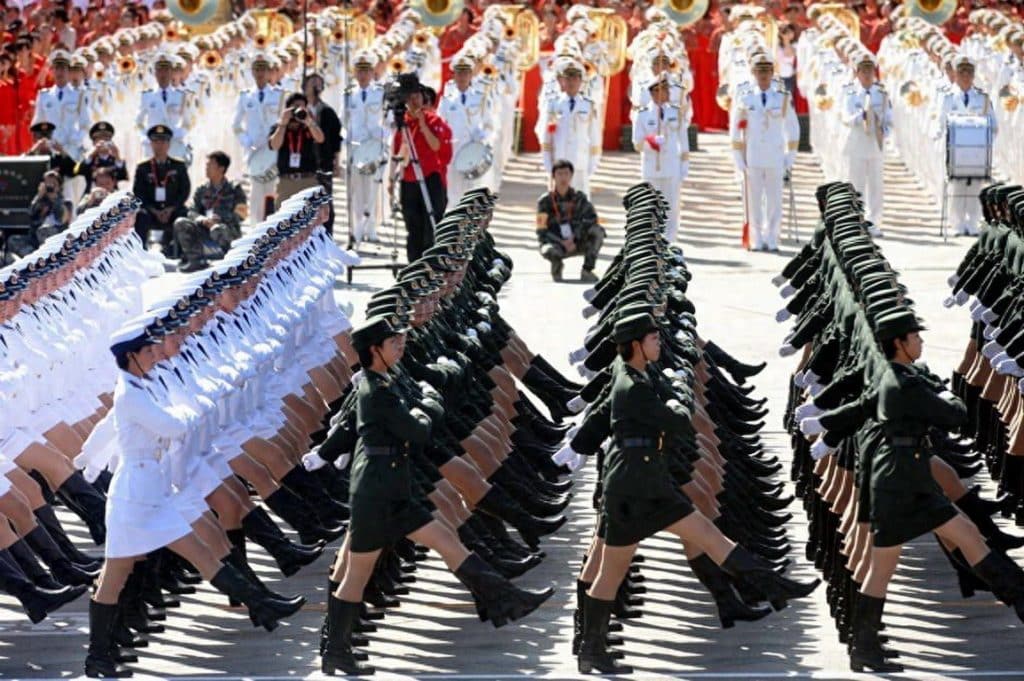The Global Shockwave of a 100% Tariff Threat
In recent weeks, the Trump administration’s threat to impose 100% tariffs has sent tremors through global markets. Yet, on October 13, Russian analysts dismissed the move as a mere act of “maximum pressure,” suggesting the tariffs were unlikely to materialize in full. Instead, they argued that Washington’s real intention is to block China’s rise in two critical areas: military power and advanced technology.
This observation may sound blunt—but it echoes a long-running U.S. strategy of curbing China’s ascent by all possible means.
The Trade War That Backfired
A look back at Trump’s first term reveals the familiar pattern. In 2020, he reluctantly rolled back part of the tariff increases—cutting some rates from 15% to 7.5%—a move widely seen as an admission that the trade war had hurt the U.S. as much as it did China.
Even Russian economist Viktor Supyan, a corresponding member of the Russian Academy of Sciences, noted that Trump “always acts like a businessman,” driven by profit and negotiation leverage rather than ideology.
This latest 100% tariff threat is less a strategic commitment than a negotiation tactic, a move to bargain from a position of apparent dominance. But before the hammer even fell, the shockwaves rippled across the U.S. economy.
Wall Street panicked.
The Dow Jones, Nasdaq, and S&P 500 all plunged, erasing $1.65 trillion in market value in a single day—the steepest drop since April. Investors’ panic was only the beginning.
U.S. companies deeply tied to Chinese supply chains felt the chill immediately, while American farmers faced an even harsher reality. Before 2018, over 60% of U.S. soybean exports went to China. Today, that figure is virtually zero—a collapse that has cost American agriculture an estimated $45 billion.
As the head of the North Dakota Soybean Growers Association put it, “This is a lose-lose game.” Ultimately, the extra costs will land on U.S. retailers and consumers, becoming a political time bomb for Trump himself.
Washington’s “Alliance” Falters
To sustain its offensive, Washington tried to form a “multi-front coalition” with Europe and India to counter China. Treasury Secretary Bessent urged allies to join the pressure campaign, insisting that “America will not be dictated to by China.”
Europe initially made sympathetic noises. EU Trade Commissioner Maroš Šefčovič promised to bring the issue to the G7, and Denmark’s foreign minister expressed solidarity—only to add moments later that “dialogue must come first.”
In truth, Europe’s stance is far from united.
Germany’s auto giants and France’s aerospace sector depend heavily on China for both materials and market access. Sacrificing those interests just to align with Washington would be economic self-sabotage.
Meanwhile, Europe’s energy dilemma persists. Despite a $750 billion deal with the U.S., actual energy imports in the first quarter totaled only $75.9 billion, while Europe still relies on Russia for about 30% of its energy. That dependency limits how far Europe can go in confronting China.
As for India—the “key partner” in America’s Indo-Pacific calculus—it has been playing both sides. During the Russia–Ukraine conflict, India bought discounted Russian oil, then resold it to Europe for a $5.4 billion profit. Furious, Washington retaliated by slapping 50% tariffs on Indian goods, effectively freezing trade talks.
The so-called “anti-China alliance” collapsed before it could even form, undone by conflicting interests and mutual distrust.
The Real Frontline: Military and Technology
Having failed to rally allies or win the trade war, the U.S. has now shifted its strategy to two areas it considers existential: military superiority and technological dominance.
According to Russian analysts, these are the “two red lines” Washington will never allow China to cross.
America’s global hegemony rests on two pillars—the U.S. dollar and its unmatched military power. But both are showing cracks.
Even the mighty F-35 fighter jet depends on rare-earth magnets—materials that 85% of which come from China. A strict Chinese export ban could halt nearly 80% of U.S. defense production lines, a vulnerability that terrifies Washington.
On the other hand, China’s rapid advances in disruptive weapons, such as electromagnetic pulse (EMP) systems, could potentially neutralize America’s traditional military edge. As one U.S. defense official warned, if China masters these capabilities, “decades of U.S. dominance could vanish overnight.”
If military power sustains America’s present, then technology defines its future. That’s why Washington’s tech blockade has intensified—from adding Huawei and DJI to the “Entity List,” to banning advanced chip exports and AI components, and restricting critical software tools like EDA systems.
Each move targets the core of China’s industrial upgrade, yet the U.S. faces growing pushback from its own tech sector, which fears losing permanent access to the vast Chinese market.
Under pressure from Silicon Valley, Washington’s strategy has subtly shifted—from blanket bans to targeted restrictions, revealing that even America’s containment strategy comes at a painful cost.
Conclusion: A Long Game of Attrition
Ultimately, containing China’s rise has become a bipartisan U.S. policy. Trump’s tariff theatrics are merely one front in a broader, long-term containment strategy.
While short-term trade skirmishes may ease through negotiation, the deeper battles—in AI, semiconductors, and defense technology—are here to stay.
China, for its part, seems fully aware of the stakes. Its push for self-reliance and innovation is not just economic—it’s strategic survival. In this prolonged contest for global leadership, the balance of initiative is quietly shifting.
References
- Financial Times, October 2024
- Russian Academy of Sciences Commentary, October 2024
- U.S. Department of Agriculture Data, 2024



